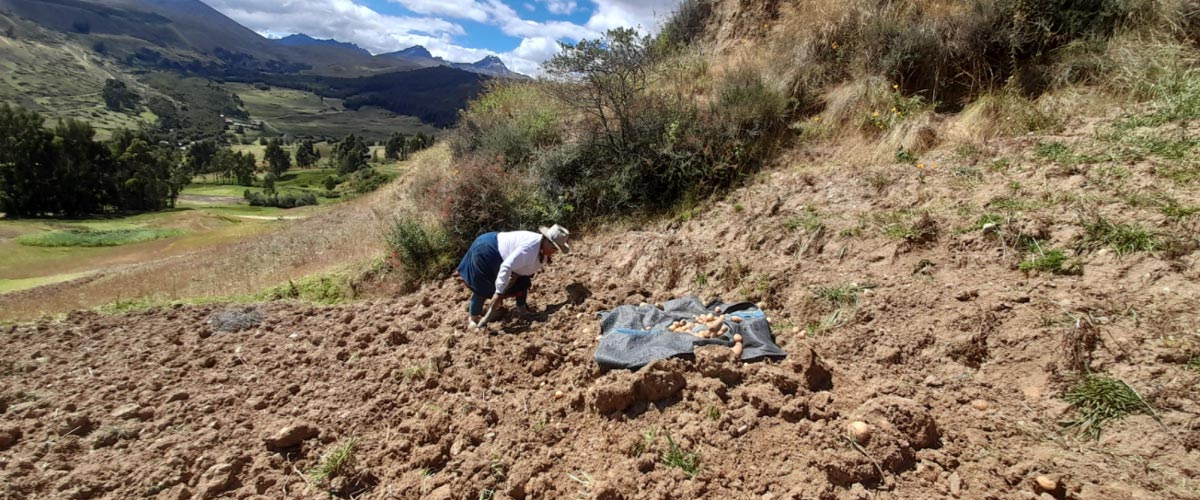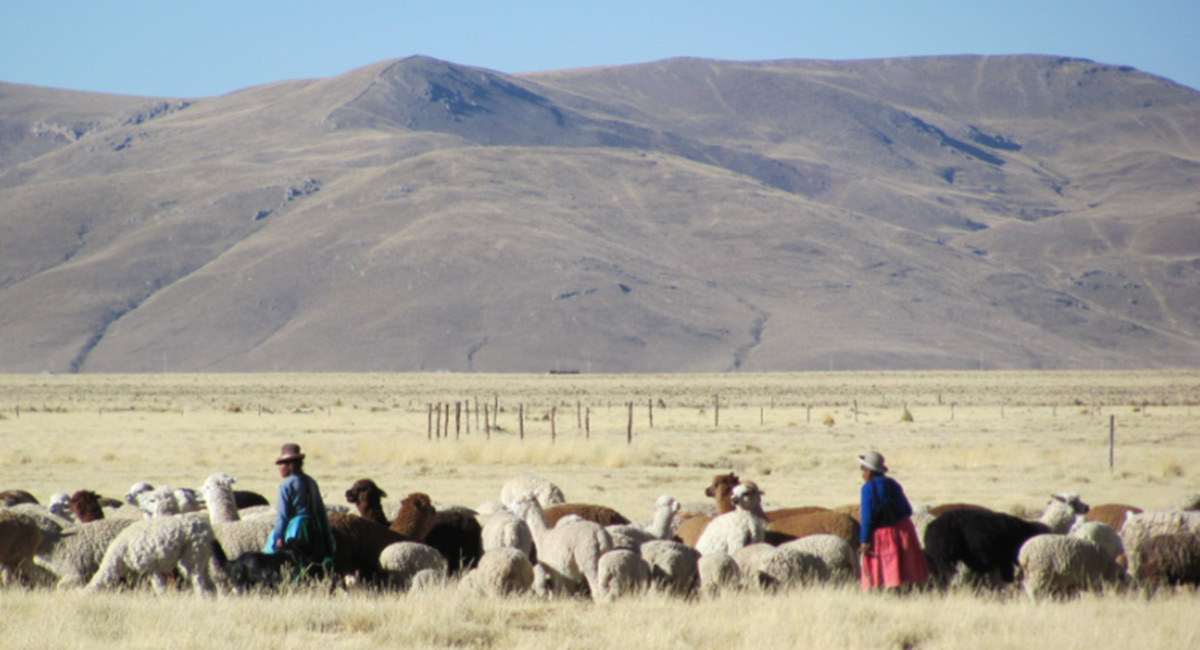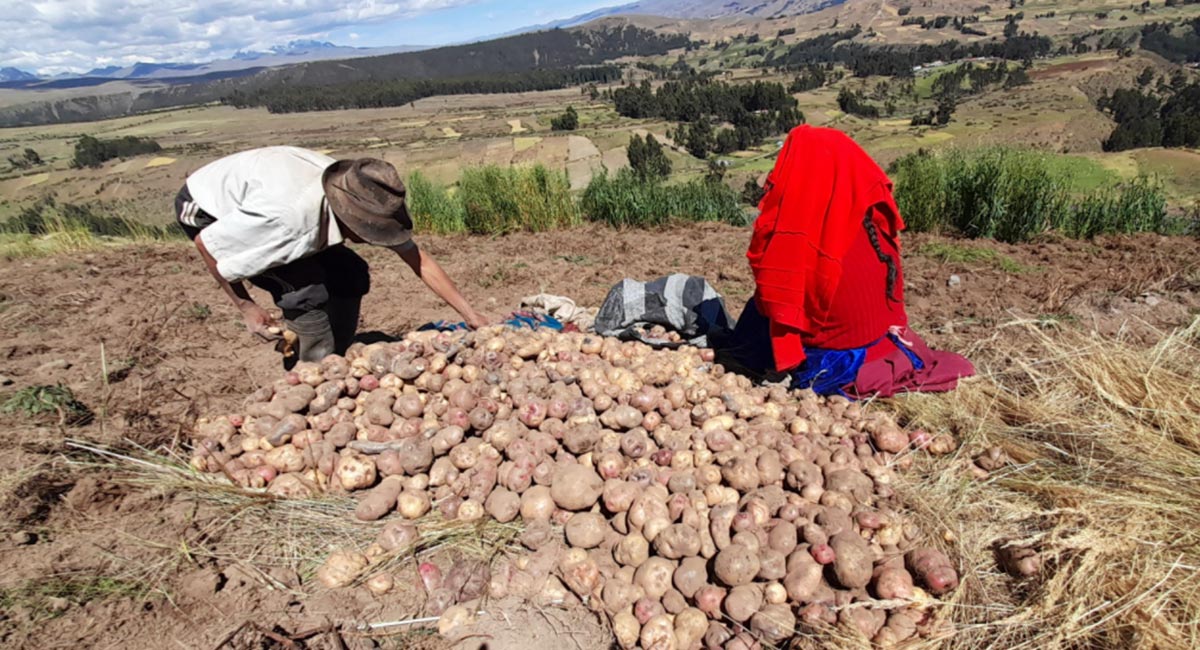Why do Andean soils in Peru continue being neglected?
The complexity and heterogeneity of high Andean agricultural systems in Peru requires holistic and inclusive approaches from soils to landscapes.
By Cecilia Turin, Katherin Meza and Steven Vanek
For too long, the importance and fragility of high Andean soils and production systems have been overlooked. The soils of the Peruvian Andes are diverse, shallow, and have very slow restoration rates. The lower and middle zones of the landscape support mixed agriculture that combines agrobiodiverse crops and livestock. The high zones support extensive grazing of livestock. Together these zones form complex cultural landscapes attached to concepts of “verticality” or elevational influence.
The diversity of elevation-based ecological zones with their soil diversity along altitudinal gradients in the Andes has allowed the domestication and production of an extensive agrobiodiversity of crops such as native potatoes and quinoa, many of them of local and global importance. These so-called “super” foods are key to combating hunger and malnutrition, achieving nutritious and diversified diets, and building more resilient food systems.

Overlooked Allies: High Andean Rangelands and Grazing Livestock Are Important for Soil Conservation
Likewise, high Andean soils, with a diversity of managed rangelands adapted to grazing, have allowed the domestication and breeding of various native and introduced livestock species. High Andean grazing livestock plays a crucial economic, nutritional, and ecological role. Despite the important role of rangelands in the protection of high Andean soils, water retention, and the vast extension of these systems in the national territory, they have not received due attention from government, research, and development agencies.

Policy Response Must Incorporate Local and Ancestral Knowledge
How can we close this gap to guarantee sustainability in the management of high Andean landscapes? As researchers who value the years of collaboration, we have had with high Andean farmers, we believe that important solutions can emerge from the principles and practices still present in these communities.
Thanks to a deep understanding of nature and its components, Andean farmers have an integrated and holistic vision of the Andean agroecosystem that comes from living in the mountains; it goes from the soil to the landscape, or from the plot to the territory. This vision has been strongly molded by their need to understand diverse and risky mountain environments.
For high Andean farming communities, the soil is a living being with social, cultural, spiritual and productive attributes. Unlike reductionist approaches that see agriculture disconnected from livestock, or a viewpoint purely dedicated to “development”, Andean farmers have an integrated vision of grazing livestock that has developed in the high rangeland zones along with the agrobiodiverse agriculture that develops in the middle and low zones of the high Andean landscape. Both agriculture and grazing livestock in the Andean agro-cosmovision are intimately connected.
Ancestral Practices Support Soil Sustainability
Ancestral knowledge and technologies prevent erosion and strategically manage rangelands, guarantying a sustainable management of the agroecosystem and permitting a long history of resilient food production from fragile soils. These principles of integrated soil management are still in force and should be incorporated into state policies, NGOs and regional entities.
Historically, Andean agriculture and grazing livestock, Andean farmers and pastoralists and their knowledge and practices have not been valued. On the contrary, they have often been targeted for blind, top-down modernization strategies. Since the beginning of the republic, the Peruvian state has insisted on agricultural development models that do not fit with an Andean country. It insists on conventional agricultural models dependent on external technology and inputs (heavy machinery and chemical inputs) conceptualized on flat lands, and on linear solutions that have little respect for Andean heterogeneity, complexity and small-scale agriculture.
Trends Toward Agroecology Need a Further Boost
The world is increasingly turning towards agroecology and holistic management, which values ancestral knowledge of soil, promotes equal importance among highly interconnected resources, and can play a role in solving the climate crisis. In Peru there are ongoing participatory research and agroecology efforts by researchers, local partners, and farmers to recover and revalue local knowledge and technologies — but these efforts do not go far enough.

Peru Must Change Its Development and Research Policies to Support Sustainable and Inclusive Andean Agriculture
It is vital that Peru recognizes the ecological, socio-cultural and food future role of Andean soils and positions soils as the basis of the food and environmental system.
As Peru celebrates its bicentennial, 200 years as an independent republic, this is an important moment to reflect and consider how we should continue. Peru has a historic opportunity to eradicate the mental colonialism that persists in government, academic centers and civil society, which prevents the inclusion of all Peruvians, their agriculture and livestock, in a more equitable future.
This is a call to revalue and incorporate knowledge and technologies adapted to the Andes with real actions. If this is done, we can reduce soil losses and contribute to the resilience of the complex cultural landscapes created by Andean small-scale farmers, with a renewed commitment to the environment.
Date:
2/17/2022